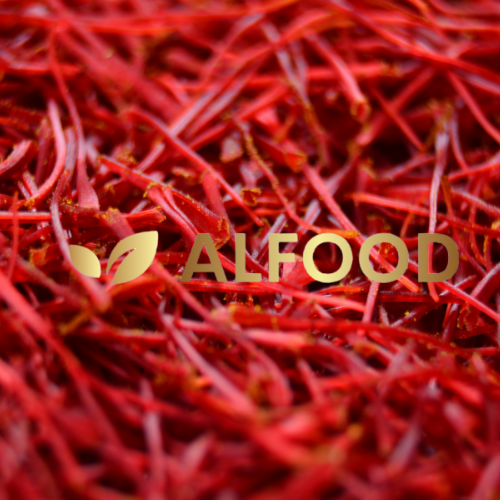Your basket is currently empty!
How to Find the Real and Original Saffron Fragrance

How to Find the Real and Original Saffron Fragrance
Saffron, often referred to as Iranian red gold, is the most expensive spice in the world, renowned for its unique aroma. This prized spice is used not only in cooking but also in pharmaceuticals and cosmetics. Interestingly, the scent of saffron is so potent that it is used in some perfumes.
History of Saffron
The earliest evidence of saffron usage dates back to the wall paintings on the Greek island of Santorini, in the excavations of Akrotiri, which are approximately 1500 years old. Even more ancient traces have been found in prehistoric paintings that are 50,000 years old.
In Greek mythology, it is said that when Hermes accidentally killed one of his friends, three drops of his blood fell on the ground. From these drops grew a magnificent purple flower with red pigments at its heart, which came to be known as saffron. This flower became a symbol of resurrection.
Notable Historical Uses of Saffron
- Cleopatra: Used saffron in her baths to enhance her skin’s color.
- Buddhist Offerings: Saffron is one of the spices offered to Buddha.
- Anti-Plague Recipes: Saffron has been used in recipes intended to ward off plagues.
Saffron is rich in healing properties and is used in traditional medicine. It is known for its mood-enhancing properties due to its effects on serotonin and dopamine, and its anti-cancer properties because of its antioxidants.
Chemical Composition of Saffron
The distinctive characteristics of saffron come from three types of apocarotenoids: crocin, picrocrocin, and safranal.
- Crocin: Responsible for the yellow color, dissolving in water.
- Picrocrocin: Contributes to the bitter taste and acts as a stomach tonic.
- Safranal: Provides the unique aroma of saffron, initially present in non-volatile form as picrocrocin, which converts to safranal over time and with heat.
Understanding Safranal – The Essence of Saffron Perfume
If you have experience with the saffron industry or have witnessed saffron harvesting, you’ll know that fresh saffron has a less intense smell compared to aged saffron. This difference is due to the transformation of picrocrocin into safranal over time. Fresh saffron is more bitter because it contains more picrocrocin, which gradually decomposes, reducing bitterness and increasing aroma.
- Safranal: The volatile compound that gives saffron its distinctive sweet smell, akin to honey, vanilla, alfalfa, and tobacco.
According to standards, the safranal content in saffron should range between 20 and 50 units.
To identify the real and original saffron fragrance, look for saffron that has aged slightly, as the transformation of picrocrocin to safranal will have enhanced its characteristic aroma. Fresh saffron will be more bitter and less aromatic, while aged saffron will have a richer, more intense fragrance.
The Difference Between Fresh and Non-Fresh Saffron
As previously mentioned, saffron’s fragrance intensifies as it ages. This is why some saffron sellers display the oldest saffron openly in their shops to let the aroma permeate the space. While saffron retains its properties and can be used for up to two years after harvesting, its quality declines over time.
Characteristics of Fresh vs. Aged Saffron
- Fresh Saffron:
- Less intense aroma
- Brighter color
- More bitter due to higher picrocrocin content
- Aged Saffron:
- Stronger aroma
- Darker color
- Less bitter as picrocrocin converts to safranal
As saffron ages, the aroma becomes stronger, making it harder to distinguish between fresh and aged saffron. If you prioritize aroma over other properties and coloring, consider using last year’s saffron or the saffron root (kanj), which is used for syrups and teas due to its strong fragrance and affordability.
Storing Saffron
Proper storage of saffron at home is crucial for maintaining its quality and aroma. Keep saffron away from light and moisture to preserve its properties. Refer to guides on storing saffron for detailed information.
Conclusion
To ensure you’re getting high-quality saffron, it’s important to understand the usual standards of saffron:
- Purchase from Reliable Brands: Always buy saffron from trusted brands with registered trademarks to ensure authenticity.
- Coloring Expectations: Expecting significant coloring from a small amount of saffron is unrealistic. If a tiny amount of saffron colors a large quantity of food, it may indicate the saffron is not genuine.
- Fragrance Expectations: Quality dry saffron does not have a strong fragrance until it is moistened. A strong aroma from unopened containers is a red flag.
- Quality Standards: Specialized institutions and tools are used to check the quality of saffron. Rely on certified brands for assurance.
By following these guidelines, you can make informed decisions when purchasing and using saffron, ensuring you experience its true quality and benefits.
